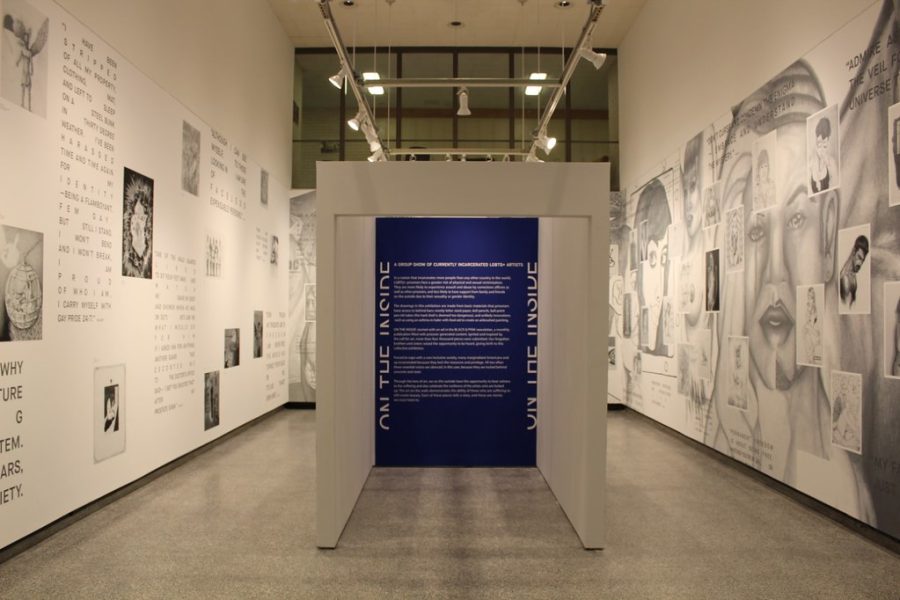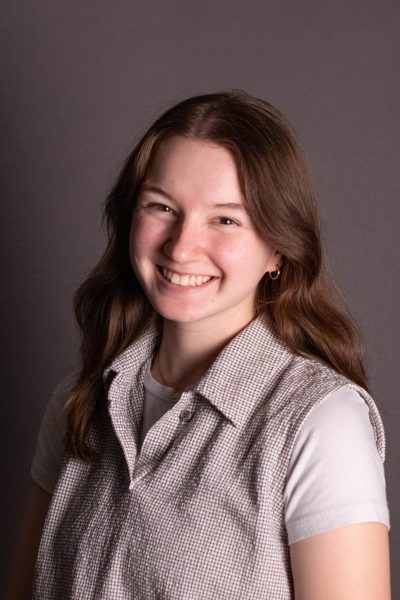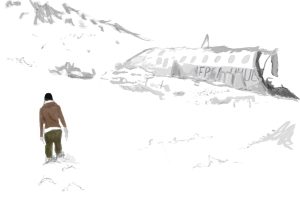Winona State first university to host exhibit highlighting imprisoned LGBTQ+ artists
“On the Inside” art exhibit in Watkins Art Gallery on Winona State University’s main campus is a curation of pieces created by a multitude of LGBTQ+ individuals incarcerated around the country, raising questions regarding the United States prison system.
February 9, 2022
From Jan. 10 to Mar. 4, 2022, the “On the Inside” art exhibit will be housed in Watkins Art Gallery on Winona State University’s main campus. Winona State is the first university to host this exhibit.
“On the Inside’’ is a curation of pieces created by a multitude of LGBTQ+ individuals incarcerated around the country, raising questions regarding the United States prison system.
“On the Inside” is also held in Los Angeles and New York City and made its way to Winona State as an opportunity to enrich LGBTQ+ education and spread awareness about the issues with the incarceration system.
Mary Jo Klinker, associate professor and director of the women’s, gender and sexuality studies program, collaborated with Gallery Director Roger Boulay to bring the exhibit to campus. Klinker explained the importance of the exhibit is not in the way the art presents itself, but in the way the artists communicate through their pieces.
“[Curator Tatiana von Fürstenberg and designer Eline Mul] both made clear that their political interest in creating this art exhibit was not to be anthropological, as in allow people to gaze at the art, but to really hear and recognize incarcerated people as having their own voices about their experiences,” Klinker stated.
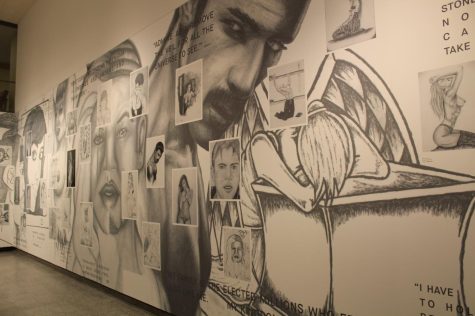
The exhibit came to life when the prison abolitionist organization, “Black & Pink”, sent out a newsletter to incarcerated LGBTQ+ individuals with word of an art show. After receiving more than 4,000 submissions, they juxtaposed the primarily pencil-and-pen-drawn pieces with staggering statistics in relation to incarceration rates. One statistic states that 85% of incarcerated LGBTQ+ individuals spend time in solitary confinement, which has been regarded by the United Nations as a psychological form of torture.
Chun Lok Mah, an art professor at Winona State, reached out to Klinker at the end of 2019 with the idea of bringing the exhibit to Winona State after seeing it in Los Angeles.
The integration of “On the Inside” into Winona State has gone hand-in-hand with various women’s, gender and sexuality studies courses. “Queer Theories and Politics” is one of those courses; it covers a multitude of subjects regarding incarceration and LGBTQ+ political issues.
“Roger, as the gallery manager, was really committed to this being a part of the lens for his courses,” Klinker stated. “So, in some sense, I guess we’re collaboratively teaching a multi-disciplinary perspective about this art exhibit.”
Tyler Treptow-Bowman, intercultural and completion coordinator in the Office of Equity and Inclusive Excellence and advisor of Full Spectrum, expressed the importance of having the exhibit on a college campus.
“If you’re not in classrooms that regularly or commonly talk about these subjects, it’s difficult to know that you should be knowing these things,” Treptow-Bowman said.
“On the Inside” has several components to the heavy and captivating atmosphere it exudes. On one side of the wall, a montage of portraits spans the entirety of the space provided. The majority of the art pieces in “On the Inside” are self-portraits; these touch on the perceived self-worth and outward appearance of the artists, especially trans women, as prison systems are known to not support the gender identities of incarcerated LGBTQ+ individuals.
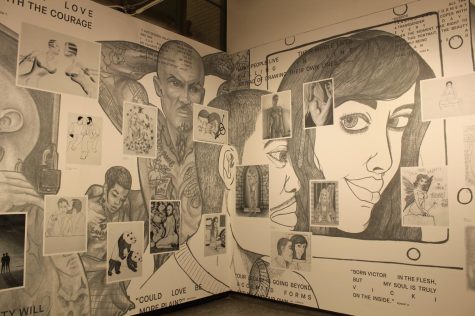
Statistics regarding the disproportionate rate LGBTQ+ people are placed in incarceration are displayed across from some of these portraits to demonstrate what the art is responding to.
According to Black and Pink’s study, “Coming Out of Concrete Closets”, 50% of LGBTQ+ prisoners placed in solitary confinement reside there for two years or longer. Because of this act of isolation, “On the Inside” provides an opportunity to connect with the artists via text. Many of the quotes which cover the exhibit’s walls are taken from letters that the artists have responded with.
“Letters are an act of solidarity that connect with people,” Klinker said. “A letter is a connection; it’s a form of communication.”
To go with the exhibit, several other events have been scheduled to expand the education on LGBTQ+ individuals within the prison industrial complex. Earlier last week, students gathered to watch a screening of the documentary “Free CeCe” before viewing the exhibit in Watkins Art Gallery.
The documentary covered CeCe McDonald, a Black trans woman from Minnesota, and her incarceration after “McDonald was brutally attacked. While defending her life, a man was killed,” according to the documentary’s official website. She was then placed in a men’s prison after spending two months in solitary confinement.
“Free CeCe” touched on McDonald’s bravery throughout the initial incident, her plea deal and her time in a men’s prison. A discussion was held after the screening regarding McDonald’s treatment and the issues within the prison industrial complex, which was led by students in the “Queer Theories and Politics” course.
Rae Peter, a leader in the discussion, considered the fact that “Free CeCe” arose questions regarding how trans women experience violence in the Prisons Industrial Complex.
“By putting trans people into prisons that don’t fit their gender, that creates a violence in and of itself,” Peter said. “Policing how they can present their gender and then also putting them into solitary confinement as a way to ‘protect’ them continues that violence.”
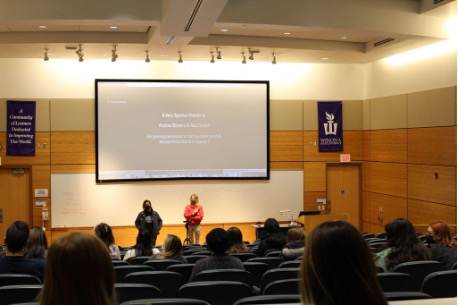
One important facet about McDonald and the “On the Inside” exhibit is that it is calling for prison abolition rather than prison reform. Many currently and previously imprisoned people in the LGBTQ+ community believe that the Prison Industrial Complex upholds too many systems of oppression and violence to be reformed or improved on.
“I feel like true reform would be the actual ending of prison: dismantling the prison system,” McDonald stated in an “OpenDemocracy” interview. “There is no such thing as saying we can fix it and end it; we can only have it one or the other way.”
A variety of other events are being held up until Mar. 1 to accompany the exhibit. Each event provides a deeper dive into the points of view of individuals “on the inside.” The next event is a film screening of “The Gentleman Bankrobber” on Feb. 15 at 5 p.m. in SLC 120 on the university’s main campus. The full list of events can be found on the Winona State website.
Many faculty have supported and continue to support the integration of “On the Inside” in Winona State’s campus. Primary support comes from the WSU Foundation and the Board of Trustees. Along with the financial and moral support from various faculty on campus, Winona State’s President, Scott Olson, has also stated his support for the exhibit as well.
“It’s a huge honor for WSU to host ‘On the Inside.’ The images are fascinating aesthetically as well as thought-provoking in terms of social justice,” Olson said. “I encourage WSU students to visit the gallery and attend some of the many programs during its exhibition here.”
Finally, it’s important to understand the purpose and message this exhibit entails and communicates; Although the portraits are beautiful and heart-wrenching in nature, it’s important to acknowledge the bigger picture of the Prison Industrial Complex, the LGBTQ+ community and the environment such individuals are placed in daily.
“I think [“On the Inside”] is an opportunity to educate about voices that are oftentimes erased in our community,” Klinker said. “And it’s an opportunity for art to be both education and resistance.”





























